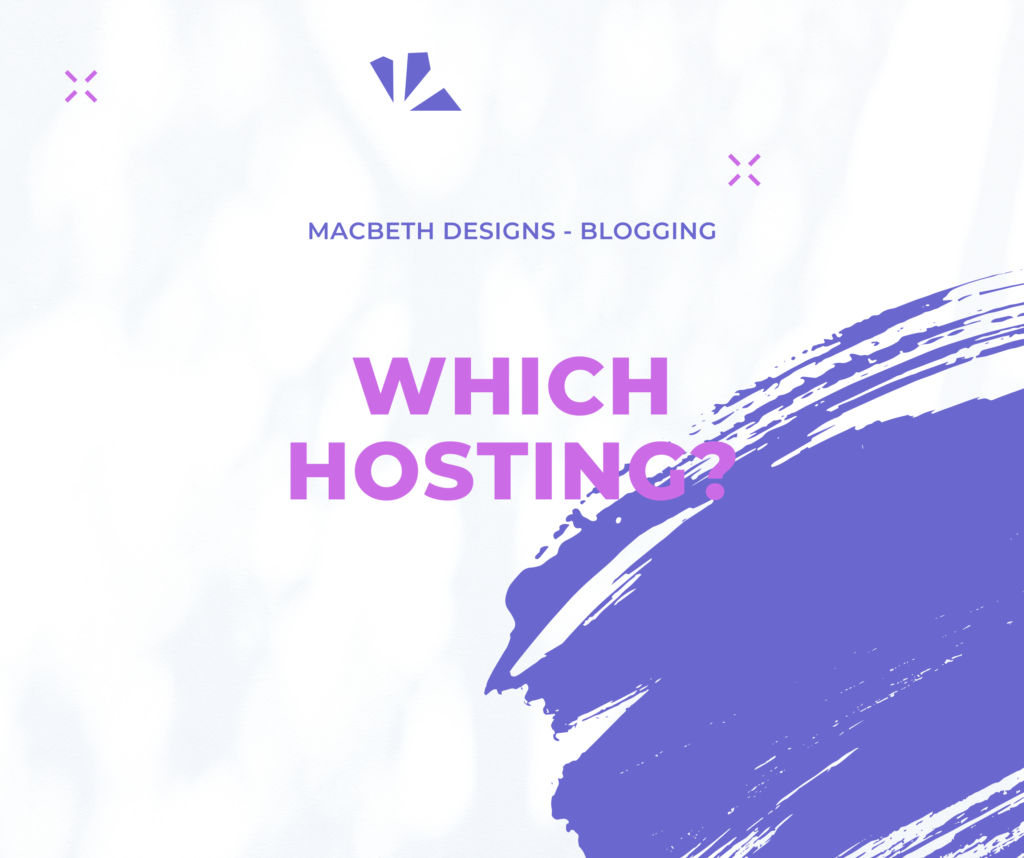What’s important in a hosting provider?
Hosting is always overlooked due to Wix, Shopify and Squarespace. But, what if you wanted to host and build your website? How can you find a great hosting deal? Today’s blog is going to outline everything that you need to know.
You may see the 3 S’s being spoken about: Speed, Support and Security, these are needed to help the performance of your website and will also help with SEO, you can read more about SEO by clicking here. Hosting services are available in a wide range of prices ranging from a few pounds a month to thousands of pounds. If you’re a small business getting started, you can probably do quite well with a cloud, virtual private server, or managed service ranging from £3 to £100 per month.
Here’s a look at what we recommend you consider when choosing a hosting provider.
Decide how much hand-holding you’ll need.
Access to email, tickets and telephone support is provided by basic customer service. However, turnaround time on requests will vary. Some service providers even offer 24-hour support for telephones. The limiting factor for non-managed services is that while a vendor may answer basic configuration questions, it will not be the manager of your systems.
If you want to completely delegate your website management, then you want to consider managed service. Managed service providers will ensure that your system is properly configured for your load, keep an eye on safety issues, patch your software as required, and, among other tasks, manage backups.
Estimate the amount of traffic you expect (and be honest with yourself).
Generally, hosting providers charge based on usage of storage and bandwidth. Bandwidth is a measure of how many bytes over a given period you serve. Bandwidth will be low if you expect only a few people to visit your site. But you can expect bandwidth requirements to surge if you’re suddenly featured at the top of Google or your product goes viral.
There is not much of a chance as long as you are honest with yourself. For starters, you would never run afoul of any limitations if you intend to only serve a few pages to a few local customers. But if you already feel you’re developing a site that will burden pooled low-end servers, make sure you select a dedicated or cloud-based server. That is next.
Understand server types.
The very cheapest hosting is available on shared servers, where one box may run hundreds of websites. The performance of your site depends on the load all the other sites are putting on the host. Shared hosting also limits your access to the server’s capabilities, generally limiting you to uploading files via FTP or SFTP, preventing shell access, restricting what programs you can run on the service and limiting the amount of database access your site can perform.
The next tier up is VPS (for virtual private server), which is a full instance of a virtual machine (a simulated computer) running on a box. Usually, hosting providers run many VPS instances on one box, but performance is almost always better than base-level shared services. If you use a VPS, you should be familiar with basic server maintenance and management.
If you don’t want to share performance with other sites, consider a dedicated server, a physical box that’s rented to you. It’s the same as having a server sitting behind your desk, except it’s located in a service provider’s data center. Only those with system management skills need apply.
Cloud servers may be a better choice. They usually run on the giant public clouds, like Amazon Web Services or Microsoft Azure. Service providers can build whatever configuration suits the needs of their customers. The big benefit of cloud servers is that you can scale seamlessly. If you need to be able to handle that big traffic surge, just pay your provider more money. Nothing needs to be moved or rebuilt.
Be wary of unlimited offers.
Some hosting providers offer so-called unlimited storage and bandwidth for a few dollars a month. This deal often isn’t what it seems to be. If you pay three bucks a month for hosting, there will likely be something in your terms of service allowing your hosting provider to either throttle your performance or shut you down after a certain usage level.
Choose a portable content management system to avoid lock-in.
Most hosts are pretty good, but times change. Management changes, acquisitions and technology shifts can alter your web hosting plans. Make sure your site isn’t locked to any one host and that you have a backup practice in place.
For my business, I make sure I use an open source content management system. Many people use WordPress on top of PHP, which will run on just about anything. Do regular updates and site backups, so you always have access to your site’s data, media and structure. This approach means all you need to do is load your backup on another provider’s service and point your domain name to that provider.
Own your domain name.
Now that you know how to get your site up onto the internet, you’re all set to get started. Go forth and build something great. Check out our web hosting providers section to find a service that works for you.


